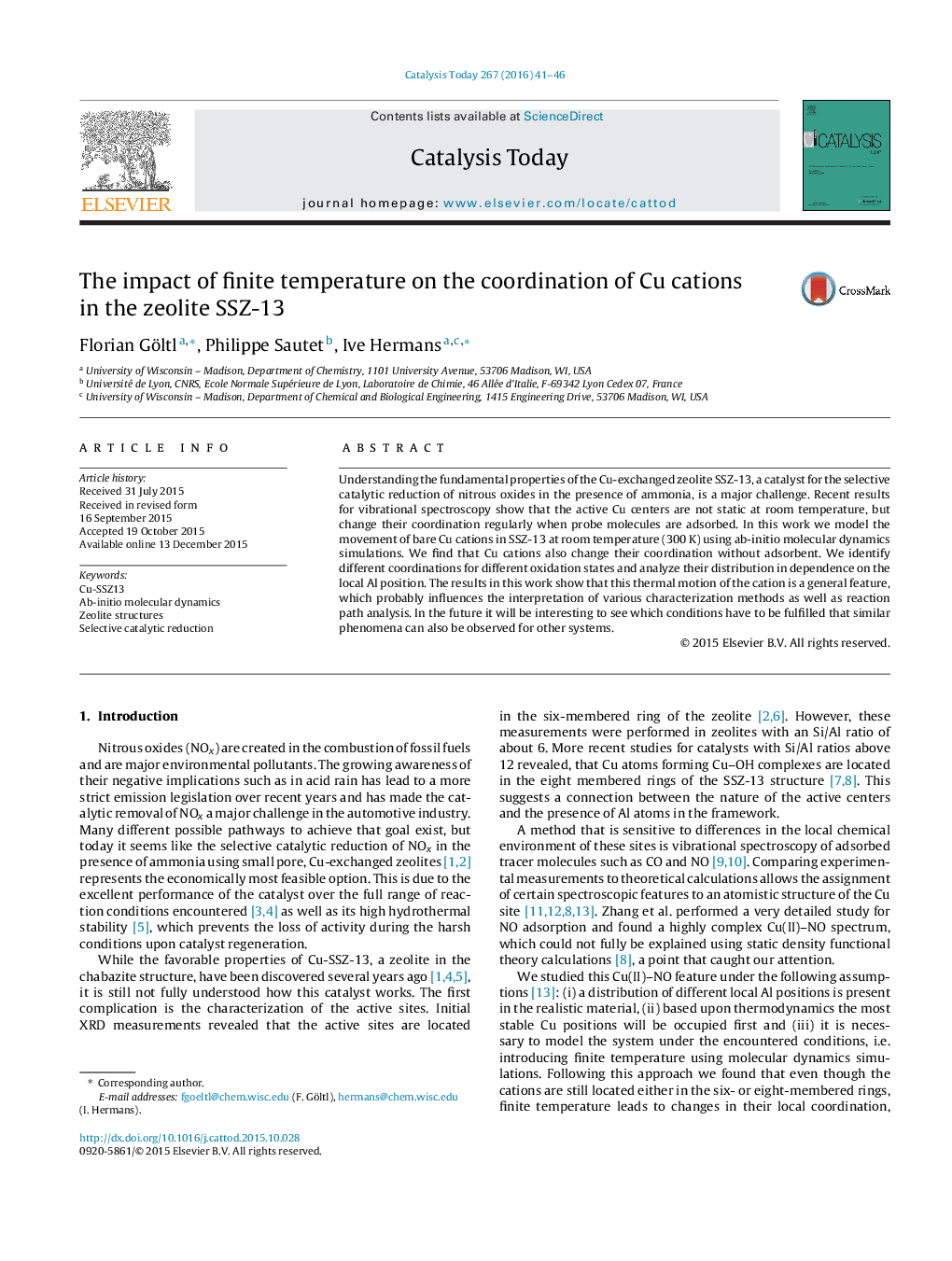| Article ID | Journal | Published Year | Pages | File Type |
|---|---|---|---|---|
| 53270 | Catalysis Today | 2016 | 6 Pages |
•We modeled CuI and CuII sites in SSZ-13 at finite temperature using ab-initio MD.•At 300 K CuI and CuII change their coordination regularly.•We identify distributions of different coordinations for various Al positions.•This will influence the analysis of spectroscopic data and reaction path analysis.
Understanding the fundamental properties of the Cu-exchanged zeolite SSZ-13, a catalyst for the selective catalytic reduction of nitrous oxides in the presence of ammonia, is a major challenge. Recent results for vibrational spectroscopy show that the active Cu centers are not static at room temperature, but change their coordination regularly when probe molecules are adsorbed. In this work we model the movement of bare Cu cations in SSZ-13 at room temperature (300 K) using ab-initio molecular dynamics simulations. We find that Cu cations also change their coordination without adsorbent. We identify different coordinations for different oxidation states and analyze their distribution in dependence on the local Al position. The results in this work show that this thermal motion of the cation is a general feature, which probably influences the interpretation of various characterization methods as well as reaction path analysis. In the future it will be interesting to see which conditions have to be fulfilled that similar phenomena can also be observed for other systems.
Graphical abstractFigure optionsDownload full-size imageDownload high-quality image (262 K)Download as PowerPoint slide
